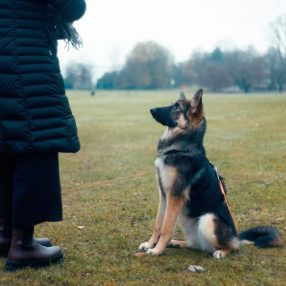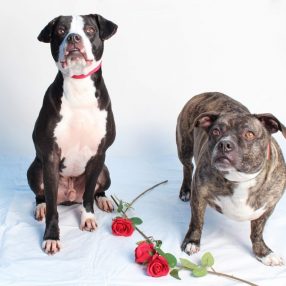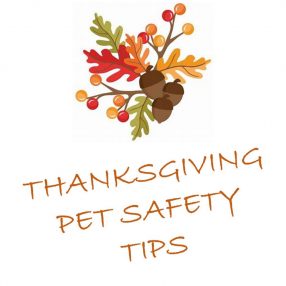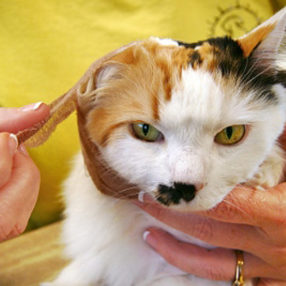Mary adored her Dachshund Daisy and always wanted her by her side. One 85°F day, while the “girls” were out for a car ride, Mary made a quick stop at the convenience store for a jug of milk. In the store, she encountered a new cashier who was having difficulty working the cash register. The line of impatient customers grew and Mary was delayed returning to the car and her precious Doxie. Ten minutes passed and although the windows were cracked open, the temperature inside climbed to 125 degrees! Daisy was in distress…she was panting profusely, her gums were bright red, her heart was racing, there was foam around her mouth – Daisy was suffering from Heat stroke.
It only takes a short period of time for an animal left in a car to get into a deadly situation! Pets don’t sweat to regulate their body temperatures (normally 100.4°F – 102.5°F). Dogs pant to exchange cooler outside air with the warm humid air in their lungs while cats don’t usually pant until they are overwhelmed by the heat. If the outside air isn’t cooler than their body temperature, an animal can succumb to Heatstroke which can cause brain damage, kidney failure, cardiac arrest and death. Old and overweight pets as well as short-nosed breeds are at the greatest risk.
Besides being left in a parked car, Heatstroke can occur if an animal is left outside without shade and water; from blow dryers and cage dryers at the groomers; from matted fur that traps heat close to the body; from crates or carriers that aren’t properly ventilated or even from exercise during the hottest parts of the day.
WHAT TO DO:
- Move your pet to a cooler environment. Indoors is best but even a shady cool sidewalk or grassy area can help.
- Place pet in a tub or wading pool, or use a hose to wet his skin, belly, arm pits, groin and paws. Think “FROM THE PAWS UP!”
- Remember on hot days water coming out of a hose can initially be very hot. Take care to let water run till cool before spraying on your pet.
- You can also cover animal with wet towels and use a cold pack around neck (30 seconds on one side and then 30 seconds on the other). Mix a clean spray bottle with 50% water and 50% rubbing alcohol and spray on skin (pads of paws, inner flaps of ears — but don’t get inside ears, belly skin). Avoid eyes, nose and mouth. As alcohol evaporates, pet will cool.
- Offer water or an electrolyte replenisher like Pedialyte or K9 Quencher, but don’t force your pet to drink. You could drown him if he aspirates the water into his lungs rather than into his stomach. Fluids may need to be given intravenously at the Vet.
- Check temperature under the tail every 5 minutes and stop cooling process at 103° F.
- Get to Vet or Emergency Center ASAP. Be prepared to treat for Shock and administer Rescue Breathing & CPR.
Fortunately for Daisy, Mary was trained inPet First-Aid & CPR and knew what to do to save the life of her precious Dachshund. She learned her lesson though and never again took Daisy for a car ride if she’d have to be left alone for even a very short time.
NOTE: The articles on this page are copyrighted. Please do not reprint or use portions for any purpose without written permission from the author. Request permission for usage by sending an email explaining how you’d like to use the materials and what parts specifically. Thank you in advance!















